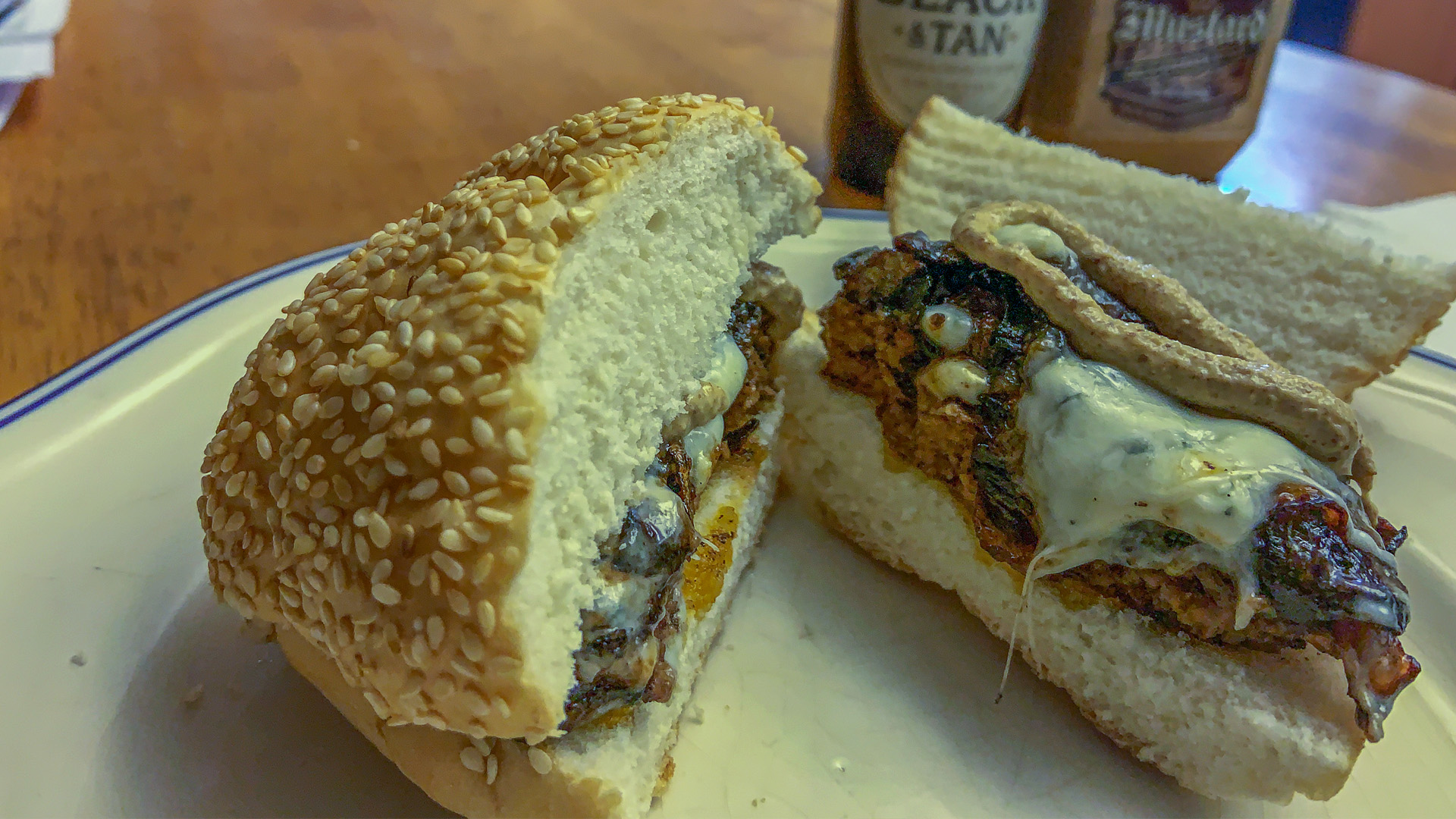
Notes:
Ingredients:
Seasoning:
Hamburgers:
Preparation:
| Hamburger Nutrition Facts |
|
| Servings: 4 | |
| Amount per serving: | |
| Calories: | 656 |
| Total Fat: | 31 g |
| Saturated Fat: | 13 g |
| Monounsaturated Fat: | 11 g |
| Polyunsaturated Fat: | 3 g |
| Trans Fat: | 0 g |
| Cholesterol: | 191 mg |
| Sodium: | 1866 mg |
| Potassium: | 851 mg |
| Total Carbohydrate: | 29 g |
| Dietary Fiber: | 2 g |
| Sugars: | 6 g |
| Protein: | 62 g |
| Vitamin A: | 19% |
| Vitamin C: | 2% |
| Calcium: | 22% |
| Iron: | 43% |